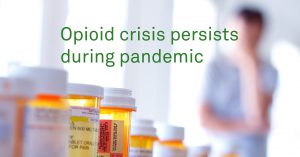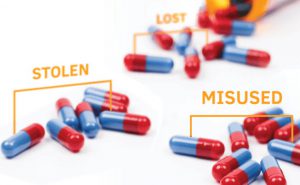By:
Kathleen Sebelius, Secretary of Health and Human Services
Eric Holder, U.S. Attorney General
Gil Kerlikowske, Director of the White House Office of National Drug Control Policy
Illegal drugs not only harm a user’s mind and body, they devastate families, communities, and neighborhoods. They jeopardize public safety, prevent too many Americans from reaching their full potential, and place obstacles in the way of raising a healthy generation of young people.
To address these challenges, today we are releasing the 2012 National Drug Control Strategy – the Obama Administration’s primary policy blueprint for reducing drug use and its consequences in America. The President’s inaugural National Drug Control Strategy, published in 2010, charted a new direction in our approach to drug policy. Today’s Strategy builds upon that approach, which is based on science, evidence, and compassion.
Most important, it is based on the premise that drug addiction is a chronic disease of the brain that can be prevented and treated. Simply put, we are not powerless against the challenge of substance abuse – people can recover, and millions are in recovery. These individuals are our neighbors, friends and family members. They contribute to our communities, our workforce, our economy, and help make America stronger.
Our emphasis on addressing the drug problem through a public health approach is grounded in decades of research and scientific study. There is overwhelming evidence that drug prevention and treatment programs achieve meaningful results with significant long-term cost savings. In fact, recent research has shown that each dollar invested in an evidence-based prevention program can reduce costs related to substance use disorders by an average of $18.
But reducing the burden of our Nation’s drug problem stretches beyond prevention and treatment. We need an all of the above approach. To address this problem in a comprehensive way, the President’s new Strategy also applies the principles of public health to reforming the criminal justice system, which continues to play a vital role in drug policy. It outlines ways to break the cycle of drug use, crime, incarceration, and arrest by diverting non-violent drug offenders into treatment, bolstering support for reentry programs that help offenders rejoin their communities, and advancing support for innovative enforcement programs proven to improve public health while protecting public safety.
Together, we have achieved significant reform in the way we address substance abuse. And the Affordable Care Act will – for the first time – require insurers to cover treatment for drug addiction the same way they would other chronic diseases. This is a revolutionary shift in how we address drug policy in America.
Over the past three decades, we have reduced illegal drug use in America. Over the long term, rates of drug use among young people today are far lower than they were 30 years ago. More recently cocaine use has dropped nearly 40 percent and meth use has dropped by half. And we can do more. As President Obama has noted, we have successfully changed attitudes regarding rates of smoking and drunk driving, and with your help we can do the same with our illegal drug problem.
Click here to see videos and read more about innovative new alternatives to drug control supported by the Obama Administration.
A full copy of the 2012 National Drug Control Strategy is available here.
For more information about drug testing, visit our website.
 Your Privacy Choices
|
Privacy Notices
|
Terms
|
Language Assistance / Non-Discrimination Notice | Asistencia de Idiomas / Aviso de no Discriminación | 語言協助 / 不䈚視通知
Your Privacy Choices
|
Privacy Notices
|
Terms
|
Language Assistance / Non-Discrimination Notice | Asistencia de Idiomas / Aviso de no Discriminación | 語言協助 / 不䈚視通知



















By:
Kathleen Sebelius, Secretary of Health and Human Services
Eric Holder, U.S. Attorney General
Gil Kerlikowske, Director of the White House Office of National Drug Control Policy
Illegal drugs not only harm a user’s mind and body, they devastate families, communities, and neighborhoods. They jeopardize public safety, prevent too many Americans from reaching their full potential, and place obstacles in the way of raising a healthy generation of young people.
To address these challenges, today we are releasing the 2012 National Drug Control Strategy – the Obama Administration’s primary policy blueprint for reducing drug use and its consequences in America. The President’s inaugural National Drug Control Strategy, published in 2010, charted a new direction in our approach to drug policy. Today’s Strategy builds upon that approach, which is based on science, evidence, and compassion.
Most important, it is based on the premise that drug addiction is a chronic disease of the brain that can be prevented and treated. Simply put, we are not powerless against the challenge of substance abuse – people can recover, and millions are in recovery. These individuals are our neighbors, friends and family members. They contribute to our communities, our workforce, our economy, and help make America stronger.
Our emphasis on addressing the drug problem through a public health approach is grounded in decades of research and scientific study. There is overwhelming evidence that drug prevention and treatment programs achieve meaningful results with significant long-term cost savings. In fact, recent research has shown that each dollar invested in an evidence-based prevention program can reduce costs related to substance use disorders by an average of $18.
But reducing the burden of our Nation’s drug problem stretches beyond prevention and treatment. We need an all of the above approach. To address this problem in a comprehensive way, the President’s new Strategy also applies the principles of public health to reforming the criminal justice system, which continues to play a vital role in drug policy. It outlines ways to break the cycle of drug use, crime, incarceration, and arrest by diverting non-violent drug offenders into treatment, bolstering support for reentry programs that help offenders rejoin their communities, and advancing support for innovative enforcement programs proven to improve public health while protecting public safety.
Together, we have achieved significant reform in the way we address substance abuse. And the Affordable Care Act will – for the first time – require insurers to cover treatment for drug addiction the same way they would other chronic diseases. This is a revolutionary shift in how we address drug policy in America.
Over the past three decades, we have reduced illegal drug use in America. Over the long term, rates of drug use among young people today are far lower than they were 30 years ago. More recently cocaine use has dropped nearly 40 percent and meth use has dropped by half. And we can do more. As President Obama has noted, we have successfully changed attitudes regarding rates of smoking and drunk driving, and with your help we can do the same with our illegal drug problem.
Click here to see videos and read more about innovative new alternatives to drug control supported by the Obama Administration.
A full copy of the 2012 National Drug Control Strategy is available here.
For more information about drug testing, visit our website.